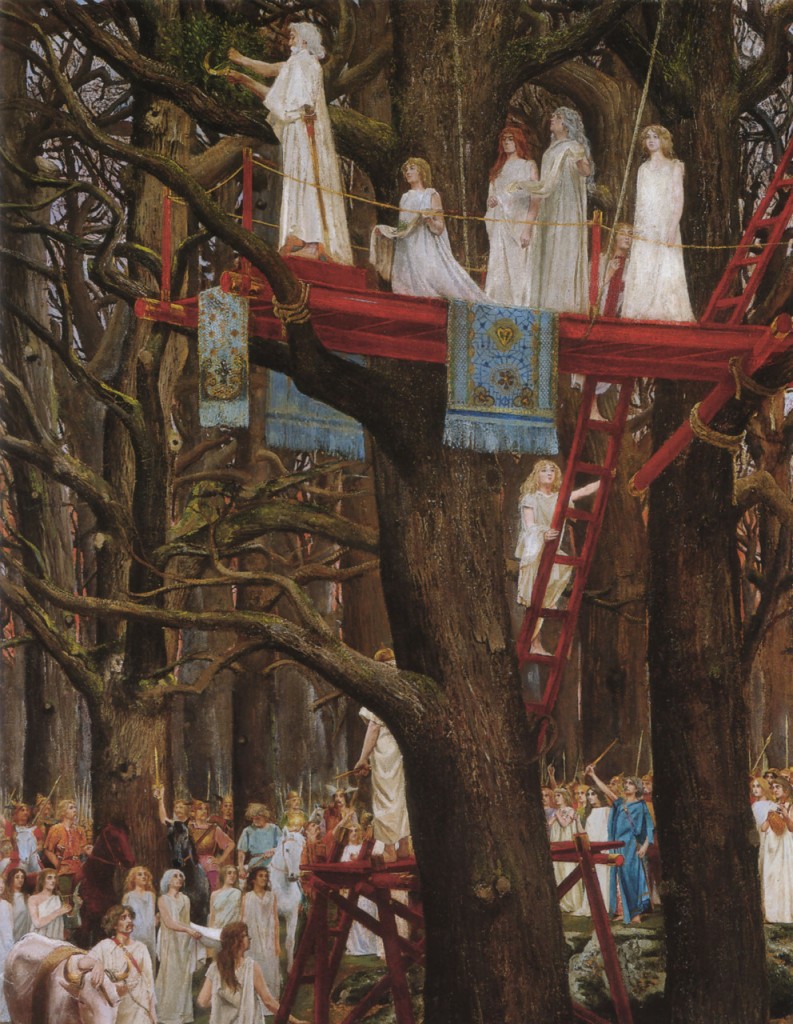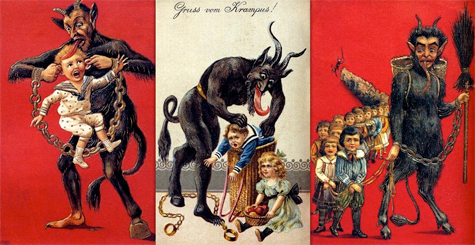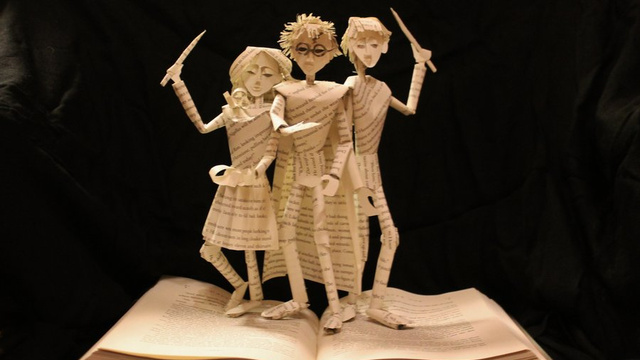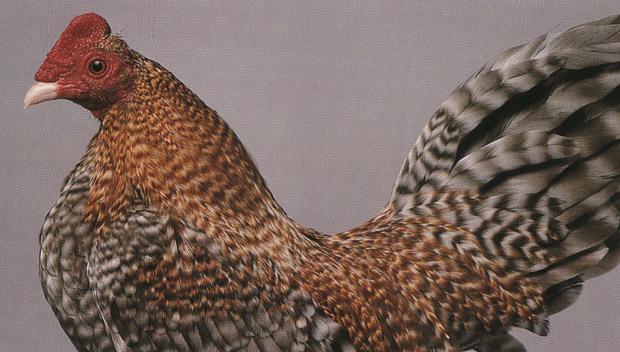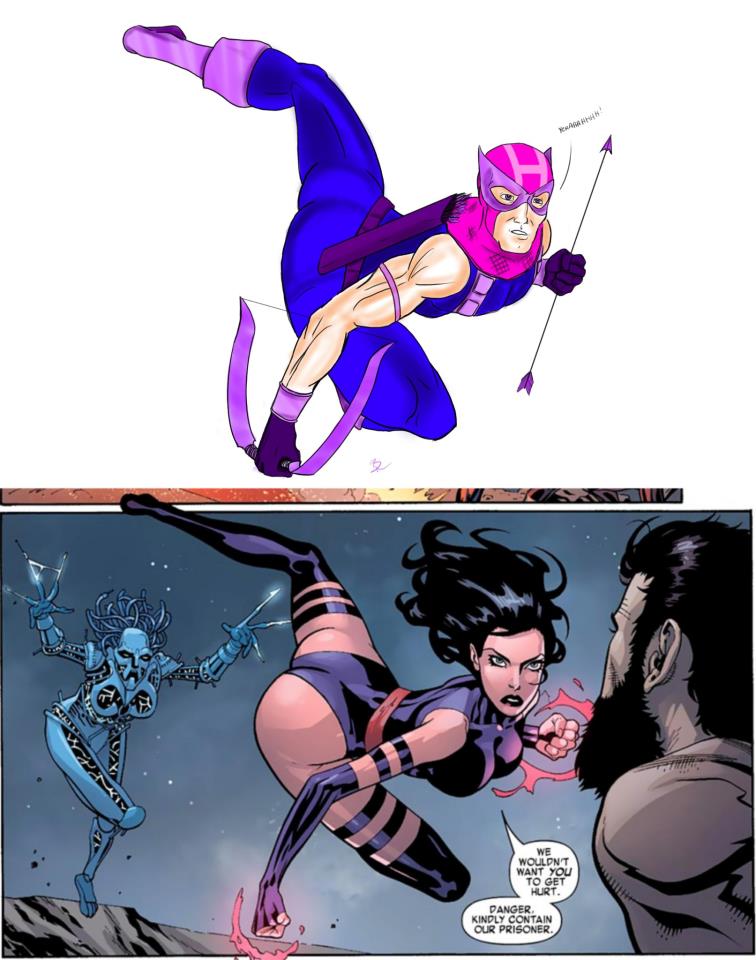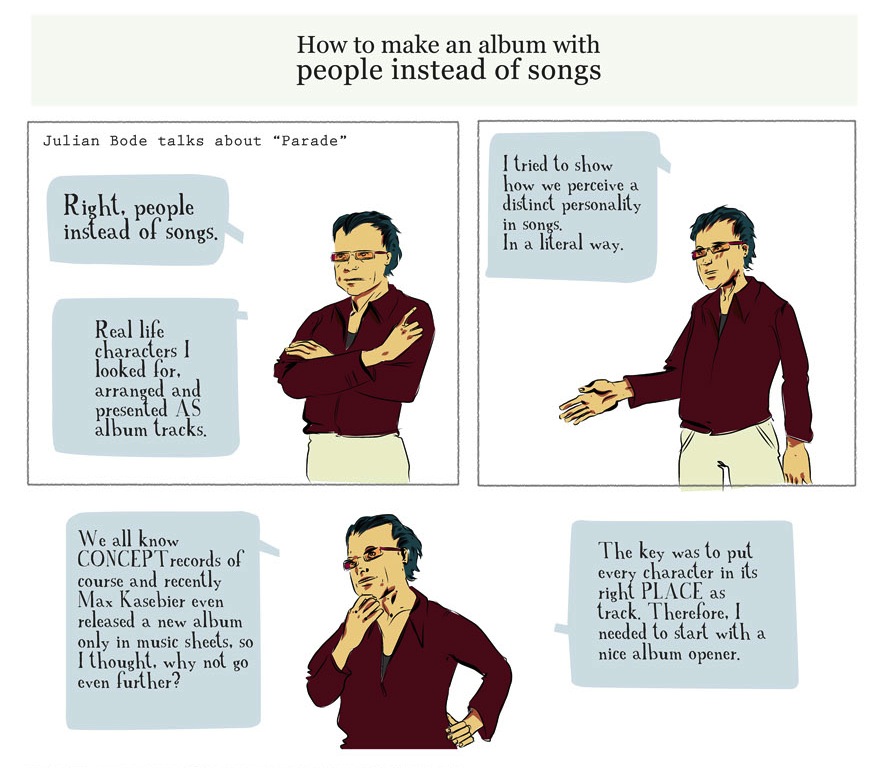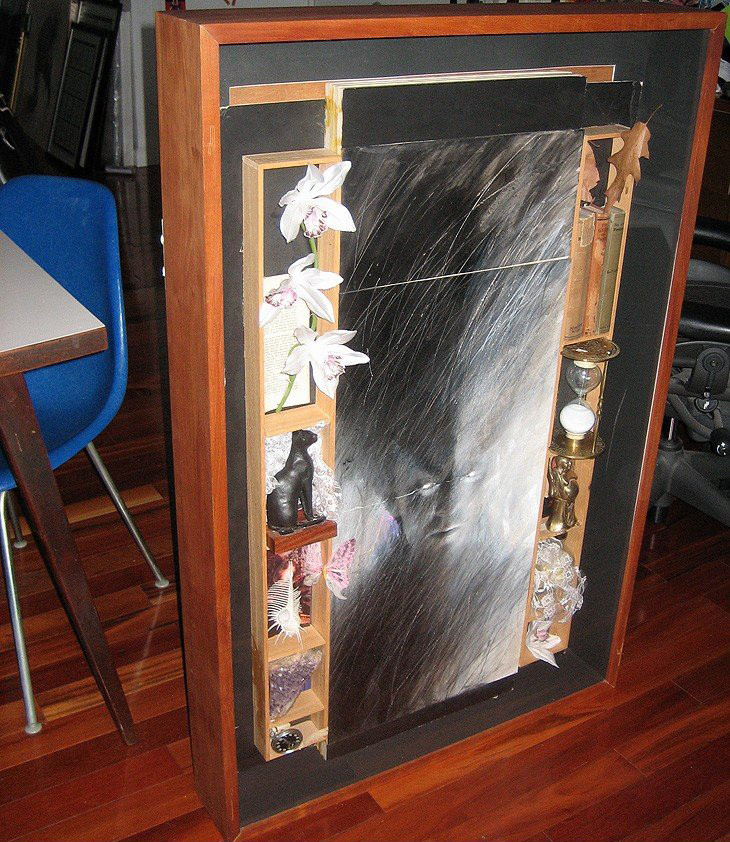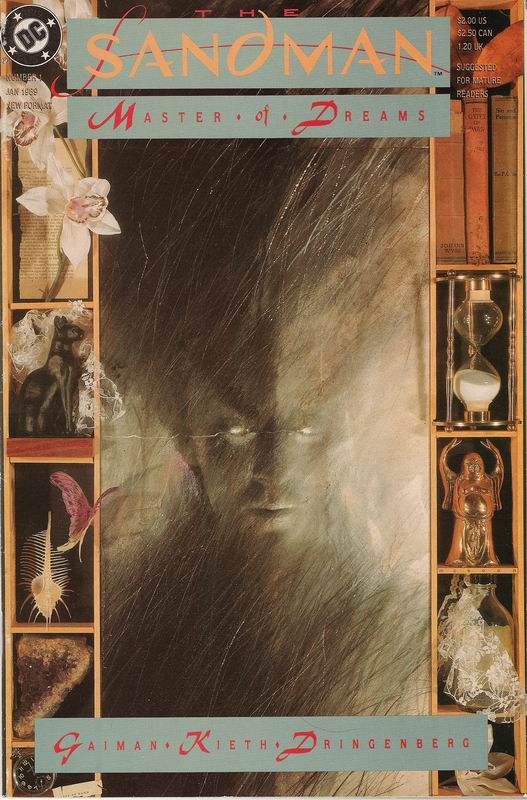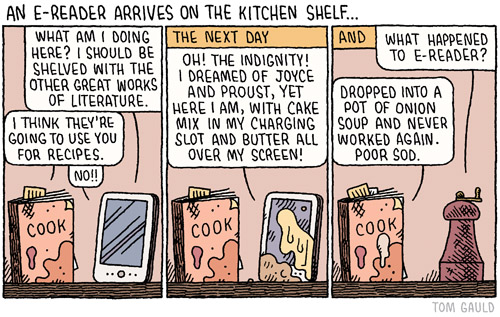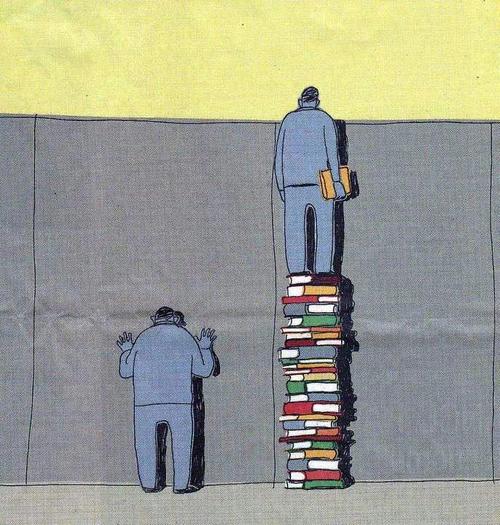“I wonder if the snow loves the trees and fields, that it kisses them so gently? And then it covers them up snug, you know, with a white quilt; and perhaps it says ‘Go to sleep, darlings, till the summer comes again.'” ~Lewis Carroll, Through the Looking-Glass
Here are some shiny things that caught my eye recently:
♦ Holiday Cheer.
I love this image—found via Kirsty Stonell Walker’s wonderful blog, The Kissed Mouth—by Henri Paul Motte, Druids Cutting Mistletoe on the Sixth Day of the Moon (click to embiggen this bad boy). The detail and the color caught my eye, and I love the heavy feeling of ritual. Here’s what Walker wrote as a context for the painting:
The Druids celebrated the weakening of the darkness, the Mean Geimhridh, in its fight against the sun, and huge feasts and celebrations were held in the spirit of optimism and thankfulness that the sun would come again. This picture shows the All-Heal ritual performed by Druids in their ceremonial robes, cutting the mistletoe from trees with golden sickles. Found in trees, suspended half way between heaven and earth it symbolised the gateway to another world. The mistletoe was cut and suspended in the doorways of homes to enhance spells and prayers and to give the inhabitants beautiful dreams. When you pass under the mistletoe, you should exchange kisses for peace and magic.
By the by, if you’re interested in Victorian art, I highly recommend The Kissed Mouth, which covers a wide range of Victorian artists and subjects. Join her for Blogvent, where each day she presents a seasonal painting with commentary. Good stuff!
♦ Kickin’ It with Krampus.
Krampus is making a comeback! For those of you not in the know, Krampus is the obverse of Santa Claus: ol’ Saint Nick rewards good little children, and Krampus punishes the rotten ones. None of that “spare the rod” kind of thinking here! At Domythic Bliss, Grace has a nice overview of Krampus, including lots of images of various Krampus-themed things. You may also enjoy this look at Krampus greeting cards at Boing Boing, which have become incredibly popular collectibles. Brom’s new book, Krampus: The Yule Lord, is reviewed at Tor.com (with lots of great images). And below is the delightful A Krampus Carol, written by Anthony Bourdain (many thanks to Andy for the link!).
♦ The Book Nook.
Prepare to swoon: dream homes built for books and the nerds who love them! My favorite is this “hovering” bookcase—the first photograph of which I may have featured on the blog before—designed by Travis Price Architects, “built into a dome over a writing studio…. The books are accessed by ladder. The architects dubbed this their version of the oracle’s temple at Delphi, but the homeowner calls it his ‘Navajo kiva of knowledge.'” Via.
The secret history of second-hand books.
Storybook characters burst from their pages in sculptures by Jodi Harvey-Brown (an example of her work is below). Harvey-Brown’s work is nice, but I’m partial to the intricate detail of Su Blackwell‘s work (speaking of Blackwell, check out this interview Nancy Alsop did with her).
And here are some pictures that just made me happy this week (click on the images to go to the original website).
♦ She Blinded Me … with Science!
Astronomy: Other solar systems might be more habitable than ours; Why is space dark?
Biology: Heteropaternal superfecundation: when pregnancy is caused by more than one father.
Cryptozoology: The natural history of the European werewolf.
Epidemiology: Dracunculiasis—an invasion of “little dragons”—is the scariest skin disease ever.
Eschatology: 8 of the weirdest predictions for the end of the world (my favorite is the Prophet Hen of Leeds).
Medicine: The real reason why nitrous oxide hits you so fast.
Neuroscience: Why do your grandparents keep falling for email scams?; Why do your pupils get larger when you’re on drugs?; The neuroscience of comas, or what it means to be trapped inside your own mind.
Optometry: LCD contact lenses could beam text messages right to your eyeball.
Physics: This is the weight of sunlight.
Psychology: Nine signs that you might be an introvert (I’m all of these except number six; though I really dislike talking on the phone, I’ll answer it. Usually. Sometimes.)
♦ Viewers’ Paradise.
I enjoyed quite a bit See Jane, a national PSA from the Geena Davis Institute on Gender in Media, which is “at the forefront of changing female portrayals and gender stereotypes in children’s media and entertainment,” and Hero4Hire Creative. Below is the PSA, directed by Adrian Garcia and designed by Lindsay Small-Butera. Via.
The Little Mermaid, a dark little film that is more in keeping with Hans Christian Andersen’s disturbing original tale than with Disney’s bubbly Ariel, “is part of the ‘Compendium’ series—short genre-based twisted takes on literary classics.” A teaser video is below, and you can watch the short film over at Fearnet (I couldn’t figure out how to embed it, and the film’s not on youtube). I’m really taken with this film, directed by Nicholas Humphries and written by Megan Hotz, and produced by Samantha Jewell, Lindsey Mann, Aliya Tarmo, and Justin Simon of the Entertainment Business Management program at the Vancouver Film School. You can also watch a “Making Of” to see some interesting behind-the-scenes stuff. I hope The Little Mermaid makes it to DVD. Via.
♦ The Ninth Art.
The Hawkeye Initiative is a new tumblr everyone’s talking about, and it’s pretty hilarious. From curator Gingerhaze: “How to fix every Strong Female Character pose in superhero comics: replace the character with Hawkeye doing the same thing.” The point of the blog is to demonstrate the contortion-tastic poses (including the infamous “brokeback“) artists draw for superheroines. (I assume the artists consider these poses sexy? But the results are just silly, really.) Below is a fine example from The Hawkeye Initiative: Barry Dwight Steel Rodger based his illustration of Hawkeye on the image of Psylocke below, but I’m afraid I have no idea which artist hated Psylocke enough to do that to her.
Tim Callahan on Alan Moore’s The League of Extraordinary Gentlemen, Part Two.
Tansy Rayner Roberts’ 30th Where the Wonder Women Are post is all about Maya, whom I didn’t really know anything about until reading this post. Learning is fun, folks!
Check out this delightful Three Panels Open by Marie Chapmen at Warren Ellis’s website.
Oh, happy day: a new installment of Juan Santapau’s The Secret Knots! Here’s a little teaser of How to Make An Album with People Instead of Songs:
Last week came the announcement that Karen Berger, Executive Editor and Senior Vice President of Vertigo Comics (an imprint of DC Comics), will be leaving the company in March. Many, many sites have blogged about her leaving, including The Beat, Tor.com, Straitened Circumstances, and DC Women Kicking Ass. Berger was responsible for a lot of my favorite comic books, like Sandman and Fables, among tons of others.
Neil Gaiman posted some images of Sandman covers done by Dave McKean, “paintings and assemblages that Dave would take to get photographed, and send the transparency to DC Comics to use as a cover.” Below are images of the first issue of Sandman—the original assemblage and then the final cover. I adore McKean’s covers; seeing these photos really makes me happy.
♦ The Reading Spot.
Delicious words for you to savor:
The Artist in the Tower by my friend Adam Mills at Ideomancer (with awesome footnotes, to boot)
Shattered Amber by Mari Ness at Daily Science Fiction
Alone (a poem) by Siegfried Sassoon at The Daily Beast (via Andy)
The Show Must by Matt London at Daily Science Fiction
Edward & Amelia vs The Vampire King, Chapter 8: Smartphones and Vampires by Russell Hinson
MiracleMech by Tim Deans at Daily Science Fiction
The Finite Canvas by Brit Mandelo at Tor.com
Live-Tweeting the Apocalypse by Ian Creasey at Daily Science Fiction
The Engine of Desire by Livia Llewellyn at Weird Fiction Review, which also features an interview with Llewellyn by my friend Adam.
Under a Sky of Knives by Michelle Muenzler at Daily Science Fiction
The Rise of Ransom City (excerpt) by Felix Gilman at Tor.com
Gabriel (a poem) by Adrienne Rich, read by Tom O’Bedlam
Flax-golden tales: The Brief, Bittersweet Romance of Leaves and Snow by Erin Morgenstern
The Perfect Match by Ken Liu at io9.com
The Magic of Christmas: An Advent Calendar of Fantasy Fiction, compiled over at LitReactor by Rajan Khanna. A fantasy story for each day of advent! I love love love this idea.
SF Signal held a Mind Meld on great books to read during Winter, and the books are great. My favorite suggestions (of the books that I’ve read) are Swordspoint by Ellen Kushner, Deerskin by Robin McKinley, The Dark Is Rising by Susan Cooper, The Lion, the Witch, and the Wardrobe by C.S. Lewis, The Left Hand of Darkness by Ursula K. Le Guin. When I think of Winter reading, I always think of A.S. Byatt—her luxuriously long books seem the right company for many an evening of reading, curled up under a blanket with a cup of cocoa near at hand.
Ray Bradbury Square: “the intersection of imagination and inspiration” (via).
♦ Someone’s in the Kitchen….
 Alton Brown on the History of Eggnog. When I was growing up, my dad always bought Borden eggnog in a can at Christmas, which consequently is the eggnog I love the best. Not many people I know are familiar with the can of wonderfulness. And, unfortunately, Borden eggnog is difficult to find around these parts, and I never remember to order some in time. If anyone happens to spy a can, let me know!
Alton Brown on the History of Eggnog. When I was growing up, my dad always bought Borden eggnog in a can at Christmas, which consequently is the eggnog I love the best. Not many people I know are familiar with the can of wonderfulness. And, unfortunately, Borden eggnog is difficult to find around these parts, and I never remember to order some in time. If anyone happens to spy a can, let me know!
Hanukkah means the continuation of the great latke-hamentash debate, and mental floss presents 8 great arguments from said debate. Just so you know: I’m gonna throw my hat in the latke corner.
10 Sci-Fi Gingerbread Creations. Check out the AT-AT below!
♦ The Writing Desk.
Kinetic typography by Sally Franckowiak of an excerpt from Neil Gaiman’s now-famous commencement speech (via):
Krissy Brady has 11 ways writers can turn a to-do list into a to-done list.
You’re Not Supposed to Write About That: Taboos in Speculative Fiction by Vylar Kaftan.
Chuck Wendig has 25 things he’d like to say to his 18-year-old self, and maybe you, too?
Getting Unstuck: Writers’ Thoughts on Writer’s Block (via Will Ludwigsen)
The Daily Routines of Famous Writers. Interesting reading! (thanks to Emily for sending me to Brain Pickings)
15 ways to write tight (via Gail Carriger).
Why Netflix makes you a better writer.
Historically Authentic Sexism in Fantasy. Let’s Unpack That. by Tansy Rayner Roberts. Excellent reading if you write fantasy (and even if you don’t).
I really loved The Art of Being Still, where Silas House says, “The problem is, too many writers today are afraid to be still.” Too true. I’ve been trying to find that stillness, rather unsuccessfully, and I also write a lot in my head, as he does, so I connected with this article in a number of ways. Do give it a read. Via Elizabeth Hand.
Also via Liz: a great interview with Ian McEwan, who reveals his love of the novella! Here’s what sells the interview for me, and I think Sterling, Cameron, and Daniel will also appreciate it:
Another recent encounter has been Joyce’s “The Dead,” which I’ve read many times. It needs to be considered as a novella, the perfect novella, entirely separate from the rest of Dubliners. An annual winter party; afterwards, a scene of marital misunderstanding and revelation in a hotel room; a closing reflection on mortality as sleep closes in and snow begins to fall—I’d swap the last dozen pages of “The Dead” for any dozen in Ulysses. As a form, the novel sprawls and can never be perfect. It doesn’t need to be, it doesn’t want to be. A poem can achieve perfection—not a word you’d want to change—and in rare instances a novella can too.
In case this writing thing doesn’t work out, we can always run away and join the French Foreign Legion.
♦ Oh Oh, It’s Magic!
Enjoy Baltass by Yann Frisch, a French magician. Here’s the official description from Frisch’s website (my translation from the French, I suspect, is quite rough, but I think it makes more sense than the online translation engines I tried first):
Baltass, a Logic of the Absurd
As indicated by the title, Baltass is based on the manipulation of a cup and a ball. At the beginning, the atmosphere is created: an odd young man sits at a table, looking intently at a metal cup that faces him and also a jug filled with water. The attitude of the young man gives us an insight into his mental health.
The sequence where he hesitates to take the jug and repeats the same gestures until the absurdity is one great comic moment, which transmits his disturbed state. He gestures frantically as panic sets in. Funny and tragic at the same time, the character is overrun by a terrible anguish. He ends up pouring himself some water, when a red ball appears in the cup!
And you should watch the rest for yourself. Lots of fun—magic for the holidays!
Via.


